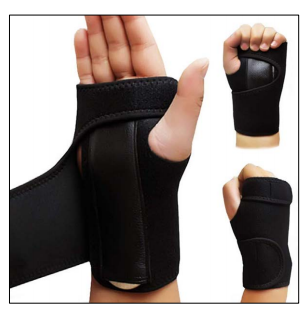 University of Nebraska researcher James Pierce has delved further into the potential for 3D printed assistive devices in ‘Efficacy of Assistive Devices Produced with Additive Manufacturing.’ He begins by stating that it is surprising there have not been more previous ventures into the use of devices like 3D printed splints and casts, despite the obvious need—and an enormous amount of injuries each year resulting in sprains and breaks.
University of Nebraska researcher James Pierce has delved further into the potential for 3D printed assistive devices in ‘Efficacy of Assistive Devices Produced with Additive Manufacturing.’ He begins by stating that it is surprising there have not been more previous ventures into the use of devices like 3D printed splints and casts, despite the obvious need—and an enormous amount of injuries each year resulting in sprains and breaks.
The goal is to eliminate older, conventional methods that may promote healing but take more time in production, are expensive, and often result in uncomfortable, poorly-fitted devices. If you have endured wearing a splint or a cast or watched someone else try to deal with wearing one, then chances are you are nodding your head right now and getting pretty interested in hearing what 3D printing can do differently for orthopedic patients.
Pierce explores how all the most intrinsic benefits of 3D printing could be used in creating customized medical devices, beginning with affordability—after all, healthcare is expensive, and cost drives many of our choices, not to mention controlling insurance coverage too. In terms of design, the researcher was hoping to find a way to fabricate parametric assistive devices that could be made quickly. This is important in nearly any consumer scenario, but especially when something is being created to fit a patient who may be in pain, whether acute or chronic.
Even more interesting about this research is the potential Pierce sees for applications in space:
“Knowledge gained from this study will validate novel assistive devices which could be used in the treatment of musculoskeletal injury for astronauts’ both during spaceflight and after return to Earth,” said Pierce. “These novel solutions will require less expert intervention and less on-site modifications for fitting.”
Pierce states that it has already been noted in previous studies that 3D printing for these types of devices is significantly faster, but still there have been no parametric devices of this specific kind actually produced using AM methods, which should create a way for patients to recover more quickly, avoid further injury, and allow for better use of effort and materials. Initial data regarding a 26-year-old male wearing a wrist orthosis showed results ‘not significantly different’ from a conventionally made device.

A) 3D model of a parametrically-defined hand exoskeleton design, scaled to fit a participant in CAD before part production. B) 3D model of a wrist orthosis, which is printed flat and thermoformed to the
contours of the users’ upperlimb.
The patient did say that the 3D printed model was more comfortable, and Pierce attributes this to the breathability of the design. The 3D printed version was also preferred due to aesthetics, featuring a more streamlined style, bright colors, and better design overall.
One of the most exciting aspects of 3D printing is that it allows users to challenge conventional methods and promotes positive change for consumers as well as a wide range of medical patients today who are benefiting from the use of 3D printed medical models, a variety of different devices, and a vast number of forays into bioprinting too.
For patients healing from sprains and fractures, the usual visit to the doctor for X-rays and a cast made of plaster may soon be a completely different experience. Find out more about additive manufacturing for parametric devices here, and check back for a full analysis of the study in April 2019.
What do you think of this news? Let us know your thoughts; join the discussion of this and other 3D printing topics at 3DPrintBoard.com.
[Source / Images: Efficacy of Assistive Devices Produced with Additive Manufacturing]Subscribe to Our Email Newsletter
Stay up-to-date on all the latest news from the 3D printing industry and receive information and offers from third party vendors.
You May Also Like
3D Printing Financials: Fathom Struggles in Financial Quicksand During Critical Transition
Facing a year of key transitions and financial pressures, Fathom (Nasdaq: FTHM) has filed its annual report for 2023 with the U.S. Securities and Exchange Commission (SEC). The document outlines...
Latest Earnings Overview for Australian 3D Printing Firms Titomic and AML3D
Australian 3D printing manufacturing firms Titomic (ASX: TTT) and AML3D (ASX: AL3) reported their financial results for the period from July to December 2023, marking the first half of their...
3D Printing Webinar and Event Roundup: April 7, 2024
Webinars and events in the 3D printing industry are picking back up this week! Sea-Air-Space is coming to Maryland, and SAE International is sponsoring a 3D Systems webinar about 3D...
3D Printing Financials: Unpacking Farsoon and BLT’s 2023 Performance
In the Chinese 3D printing industry, two companies, Farsoon (SHA: 688433) and Bright Laser Technologies, or BLT (SHA: 688333), have recently unveiled their full-year earnings for 2023. Farsoon reported increases...


































